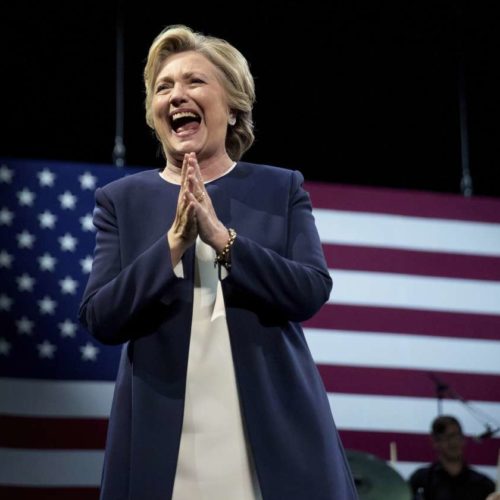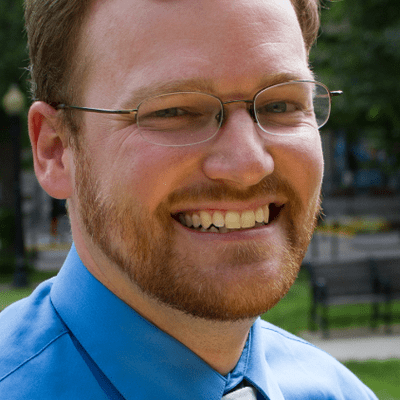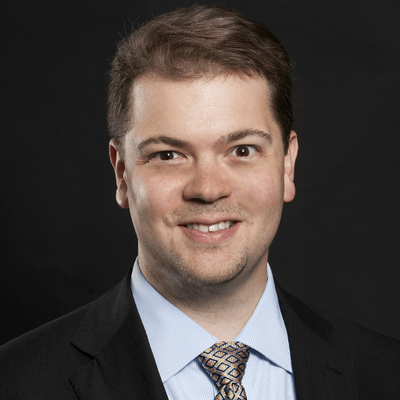This story was co-published with TIME.
Introduction
Democrat Hillary Clinton’s presidential campaign is making Republican Donald Trump — a man who can’t stop bragging about his billions — look like a political pauper.
Clinton’s campaign, along with a network of supportive super PACs, has charged out to a significant fundraising lead as Election 2016 shifts into general election mode.
But while Trump’s understaffed and decidedly unorthodox campaign lacks raw cash, it continues to enjoy blanket media coverage that Clinton’s machine is attempting to battle with nonstop advertising.
Here’s a Center for Public Integrity rundown of the more telling — and curious — statistics to emerge from this latest round of campaign finance filings covering activity during May:
$173,597,679: The amount by which Clinton’s campaign has outraised that of Trump during the 2016 election. Entering June, Clinton’s fundraising machine had pulled in more than three-and-a-half times as much money as Trump’s. She had raised about $238 million for her campaign (not counting supportive super PACs), while Trump had collected about $65 million — largely from his own money. Most recent polls give Clinton a modest lead in the presidential race, although Trump has praised his campaign’s thriftiness. “I spend much less money than her and the results so far [are] the same. I should be credited for that,” Trump told FOX News host Bill O’Reilly Monday night.
$46,098,694: The amount Trump has contributed to his own campaign, mostly in the form of loans his campaign says Trump won’t collect on. Sure, $46 million-plus is serious scratch for most Americans. But in Trump terms, it’s a pittance — not even 8 percent of the way toward the $600 million that Trump once said he could personally pump into a presidential campaign.
$13,747,372: The amount Right to Rise USA refunded to its donors in May. The super PAC, which backed former Florida Gov. Jeb Bush’s presidential bid, had raised more than $121 million and spent nearly all of its haul before Bush withdrew from the race in February. The super PAC, which can raise and spent unlimited amounts of money, said it would refund a minimum of 10 percent to donors who gave $1,000 or more to back Bush’s fight for the Republican nomination. At the end of May, Right to Rise USA had a little more than $3 million left in the bank.
$9,235,391: The amount Democratic presidential candidate Bernie Sandershad in the bank entering June, after raising more than $229 million and spending about $220 million since he launched his 2016 bid last year. Sanders appears to have burned through much of his remaining cash competing in the final Democratic presidential primaries. In June, his campaign sponsored about 2,000 TV ads, as he beat out Clinton in Montana and North Dakota but lost delegate-rich contests in other states such as California and New Jersey.
$8,966,466: The amount refunded by pro-Ted Cruz super PAC Keep the Promise II to GOP megadonor and energy investor Toby Neugebauer. Neugebauer last year contributed $10 million to Keep the Promise II, which added financial heft to Cruz’s emerging candidacy. But later, the group drew ire from Cruz supporters for not spending significantly during the primary election cycle. Neugebauer, who has since endorsed Trump, told the Center for Public Integrity in May that he had “not yet focused” on the future of Keep the Promise II. Keep the Promise II has since terminated.
$6,966,000: The total amount owed to BB&T bank by the Republican National Committee, according to its most recent campaign finance filing, which showed it borrowed approximately $2 million of that amount in May. That’s less debt than the $9.9 million the RNC reported carrying in June 2012, but the party also reported a lot less cash on hand — $19.9 million, compared to $60.8 million at the same point four years ago. One possible comfort: The Democratic National Committee owes even more, reporting more than $7.9 million in debt at the end of May to Amalgamated Bank Of New York and a variety of other creditors.
$3 million: The amount conservative billionaire Charles Koch donated to the Freedom Partners Action Fund in May. The super PAC has so far this election cycle only invested in Republicans competing for U.S. Senate seats. The Koch brothers have yet to endorse Trump or contribute to his presidential bid. Since January 2015, Freedom Partners Action Fund has raised nearly $21 million. The Kochs’ extensive political network intends to spend about $250 millioninfluencing elections in 2016.
$1,888,032: The amount Marco Rubio’s presidential campaign owed creditors at the end of May. Rubio’s latest single debt — more than $721,000 — is owed to political data consulting firm FLS Connect for telemarketing services. Rubio, who is mulling whether to seek re-electionto his U.S. Senate seat, isn’t alone among GOP presidential also-rans in his indebtedness. Wisconsin Gov. Scott Walker’s campaign, for example, still owes 25 creditors a collective $807,675 — about nine months after Walker quit the race. And the presidential campaign of Sen. Rand Paul, R-Ky., owes almost 50 vendors nearly $311,000. But some former candidates are squarely in the black. Cruz retained more than $6.8 million through May. Meanwhile, Ben Carson reported a net $1.57 million left in his campaign account, and Ohio Gov. John Kasich ended last month with more than $552,000 in the bank.
$851,245: The average amount that Clinton raised per day during May, as her campaign committee pulled in more than $26 million. To date, her campaign has now raised more than $238 million, with about $1 of every $5 coming from small-dollar donors who gave $200 or less. Trump has collected a similar portion of funds from such small-dollar donors.
$300,000: The amount that Republican Carly Fiorina’s failed presidential campaign has transferred to a hybrid super PAC that Fiorina helped launchabout a month after she dropped out of the 2016 White House race. Of that sum, $250,000 came in May. Fiorina’s new group, known as Carly for America, has also received nearly twice that amount from the pro-Fiorina super PAC, which was legally prohibited from coordinating its spending with her presidential campaign. Super PAC CARLY for America — short for Conservative, Authentic, Responsive Leadership for You and America — donated $575,000 to Carly for America on May 26, according to a new campaign finance filing.
$100,000: What the Entertainment Software Association, a trade group that spends millions of dollars each year lobbying the federal government, gave in Mayto Senate Majority PAC, a super PAC closely aligned with the Democratic Party. The contribution — part of Senate Majority PAC’s $4.7 million haul last month — is the latest example of Democrat-backing super PACs accepting money from corporations, nonprofits and other entities that aren’t by law required to publicly disclose their root funders. Many Democrats (including the Democratic Senatorial Campaign Committee and Senate Majority PACitself) have decried what they like to dub “dark money.” Meanwhile, most congressional Democrats havesupported legislation such as the DISCLOSE Act, which aims to outlaw secret political cash.
$36,906: Value of the greenbacks in the Green Party of the United States’s account heading into June. While Jill Stein, the presumptive Green Party presidential nominee, has high hopes for her insurgent bid, her national party’s resources are but a tiny fraction of what the DNC and RNC boast. For perspective: the Green Party couldn’t pay cash for even one 2017 Ford Fusion Hybrid Platinum Sedan — manufacturer’s suggested retail price of $37,020. Stein’s campaign itself is doing a bit better, posting a cash-on-hand total of about $196,000 through May.
$25,000: The amount billionaire media mogul Stan Hubbard of Minnesota donated in May to Great America PAC, a pro-Trump super PAC. Great America PAC has raised more than $2.5 million since its formation in February, but high-profile donors not named Hubbard have been largely absent. To date, most of Great America PAC’s nominally pro-Trump TV ads have prominently urged viewers to call 1-800 numbers, leading some critics to raise concernsabout the group. However, a new spot, unveiled Friday, features a former Navy SEAL endorsing Trump as a strong leader at a time in which the tragedy in Orlando stands as “a stark reminder that the enemy and the battlefield is moving here to our shores.”
$6,043: The amount the Trump campaign spent in May on office supplies from online retailer Amazon. That’d be entirely unremarkable if the Trump campaign hadn’t, in revoking the Washington Post’s campaign credentials, released this statement on June 13: “The Washington Post is being used by the owners of Amazon as their political lobbyist so that they don’t have to pay taxes and don’t get sued for monopolistic tendencies that have led to the destruction of department stores and the retail industry.” The Washington Post is owned by billionaire Jeff Bezos, who is also Amazon’s founder and chief executive.
$3,938: What upstart vintner Eric Trump Wine Manufacturing LLC of Charlottesville, Va. — Eric Trump being Donald Trump’s adult son — earned in May from his father’s presidential campaign.
98.8: Percentage of the $12.1 million pro-Clinton super PAC Priorities USA Action raised in May from just 14 individuals or entities. Top donors last month included media mogul Fred Eychaner ($3 million), financier Donald Sussman ($2 million) and private investor Bernard Schwartz ($1 million). Political organizations controlled by three labor unions — the American Federation of Teachers, Laborers International Union of North America and International Union of Operating Engineers — each also gave $1 million to the super PAC, which has sponsored a torrent of anti-Trump advertising in recent weeks.
73.7: Percentage of the roughly $190,000 spent by Libertarian presidential candidate Gary Johnson in May that went to the consulting firm of his campaign manager, Ron Nielson. In late May, Johnson officially became the Libertarian Party’s nominee. But ahead of the party’s convention, his spending habits drew criticism in some quarters. (His 2012 presidential campaign is also still about $1.9 million in the red.) Johnson’s 2016 campaign entered June with about $176,000 in the bank and no debt.
$0: The overall fundraising haul for ill-fated Never Hillary PAC, one in a gaggle of avowed anti-Clinton organizations that have registered with federal regulators but have largely accomplished little. “Never Hillary has been open for a month and has received zero donations and has zero debts or outstanding payments,” PAC treasurer Sean Duenser wrote Friday in a decidedly sad trombone-y letter to the Federal Election Commission. “I wish to terminate this PAC.”
Chris Zubak-Skees contributed to this report.
Read more in Money and Democracy
Money and Democracy
Koch-backed ‘dark money’ groups fined for failing to disclose donors
Three conservative organizations agree to pay FEC combined $233,000
Money and Democracy
Car dealer-congressman subject of ethics probe
Republican Rep. Roger Williams submitted amendment that would benefit his business





Join the conversation
Show Comments